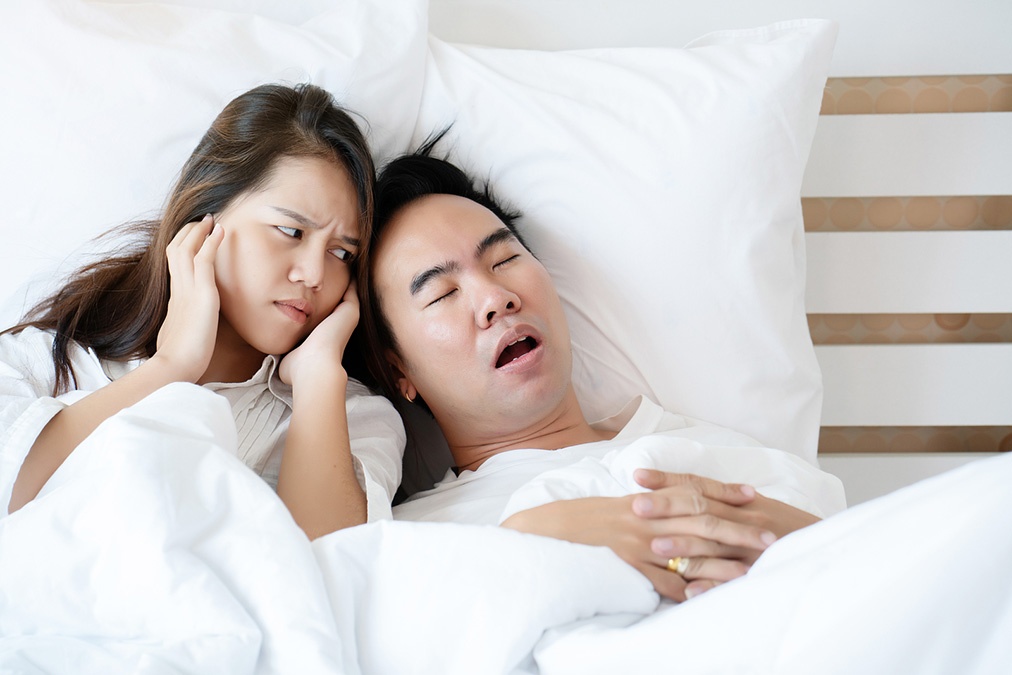 It’s terrifying how few people actually benefit from traditional sleep apnea treatments, such as the CPAP mask.
It’s terrifying how few people actually benefit from traditional sleep apnea treatments, such as the CPAP mask.
But some do.
So, why does it work for some but not all?
Australian researchers recently found the answer to this question and published their findings in the journal Sleep.
And with those findings, we have a solution that could help everyone suffering from sleep apnea.
From previous research, the researchers identified a problem often overlooked: at least one-third of sleep apnea patients also suffers from insomnia. These people respond poorly to sleep apnea treatment, partly because sleep apnea is not their only problem and partly because they adhere very poorly to sleep apnea treatment programs, such as continuous positive airway pressure.
Another problem is that where doctors diagnose the problem correctly by identifying both insomnia and sleep apnea, they often prescribe sedatives to help the patient sleep better. But such drugs aggravate the sleep apnea, as they relax the airway muscles too much, leading them to collapse, which causes sleep apnea.
In response, the Australian research team decided to investigate whether people with this debilitating double whammy of insomnia and sleep apnea would respond better if insomnia were treated first with cognitive behavioral therapy before the sleep apnea was tackled with continuous positive airway pressure.
They recruited 145 patients with co-occurring insomnia and sleep apnea, often called COMISA.
They first divided them into two groups: one group that received four sessions of cognitive behavioral therapy followed by continuous positive airway pressure, and another group that received their treatments as usual followed by continuous positive airway pressure. Some of the usual treatments involved no treatment at all, and others involved drugs.
After these treatments, the researchers followed their study subjects for six months to see what would happen.
Firstly, they noticed an increase of 87 percent in acceptance of continuous positive airway pressure by the cognitive behavioral therapy group, leading to 61 minutes per night longer use of the airway pressure devices when compared to the treatment-as-usual group.
This lasted for four months.
After six months, combined cognitive behavioral therapy and continuous positive airway pressure had led to a 52 percent improvement in insomnia severity (compared to 35 percent in the other group).
It had also led to a 48 percent improvement in nighttime insomnia complaints, versus 34 percent in the other group, and a 30 percent improvement in negative sleep-related beliefs, compared to 10 percent in the other group.
If you are one of those unlucky people with both insomnia and sleep apnea and simply cannot find relief with sleep apnea treatment, you must therefore treat your insomnia first.
And for your sleep apnea treatment, that can be gone tonight using the easy throat exercises found here…

 Overcoming IBD
Overcoming IBD Multiple Sclerosis
Multiple Sclerosis Banishing Bronchitis
Banishing Bronchitis Gum Disease Gone
Gum Disease Gone Overcoming Onychomycosis
Overcoming Onychomycosis Neuropathy No More
Neuropathy No More The Prostate Protocol
The Prostate Protocol Brain Booster
Brain Booster
 Ironbound
Ironbound
 Solution for Shingles
Solution for Shingles
 The Bone Density Solution
The Bone Density Solution
 The Ultimate Healing Protocol
The Ultimate Healing Protocol
 The Parkinson's Protocol
The Parkinson's Protocol
 The Chronic Kidney Disease Solution
The Chronic Kidney Disease Solution
 Overthrowing Anxiety
Overthrowing Anxiety The Fatty Liver Solution
The Fatty Liver Solution The Hypothyroidism Solution
The Hypothyroidism Solution
 The End of Gout
The End of Gout The Blood Pressure Program
The Blood Pressure Program
 The Oxigized Cholesterol Strategy
The Oxigized Cholesterol Strategy
 Stop Snoring And Sleep Apnea Program
Stop Snoring And Sleep Apnea Program
 The Arthritis Strategy
The Arthritis Strategy The Vertigo & Dizziness Program
The Vertigo & Dizziness Program The 3-Step Diabetes Strategy
The 3-Step Diabetes Strategy Hemorrhoids Healing Protocol
Hemorrhoids Healing Protocol The Erectile Dysfunction Master
The Erectile Dysfunction Master Weight Loss Breeze
Weight Loss Breeze The IBS Program
The IBS Program The Insomnia Program
The Insomnia Program The Migraine and Headache Program
The Migraine and Headache Program The Neck Pain Solution
The Neck Pain Solution The Menopause Solution
The Menopause Solution The Ejaculation Master
The Ejaculation Master The TMJ Solution
The TMJ Solution The Acid Reflux Solution
The Acid Reflux Solution The Fibromyalgia Solution
The Fibromyalgia Solution The Psoriasis Strategy
The Psoriasis Strategy